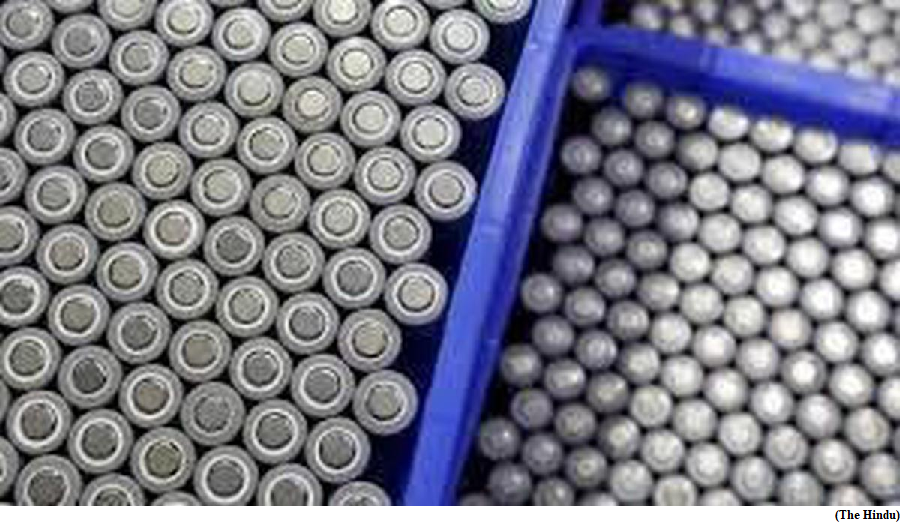Successful flight of Small Satellite Launch Vehicle (SSLV) (GS Paper 3, Science and Tech)

Why in news?
- Recently, the Indian Space Research Organisation (ISRO) successfully launched SSLV-D2 from Sriharikota.
Details:
- SSLV-D2 carried EOS-07, a 153.6 kg Earth Observation Satellite realised by ISRO; Janus-1, a technology demonstration satellite weighing 10.2 kg belong ANTARIS, USA; and AzaadiSAT-2, an 8.8 kg satellite realised by Space Kidz India by integrating various scientific payloads developed by 750 girl students across India.
EOS-07:
- The EOS-07 satellite weighing 156.3 kg, developed by ISRO has a mission life of 1 year.
- The mission objective was to design and develop payload instruments compatible with a micro satellite bus and new technologies that are required for future operational satellites and to design and develop a micro satellite accommodating new technology payloads in a quick turn-around time.
Janus-1:
- The 10.2kg Janus-1 is a technology demonstrator smart satellite, based on USA’s Antaris software platform.
AzaadiSAT-2:
- The AzaadiSAT-2 weighing around 8.8kg has been developed by a team of Space Kidz India, a Chennai based Indian Aerospace Startup.
- About 750 girl students were guided to develop the payloads. The NanoSAT aims to demonstrate LoRa and amateur radio communication capabilities, measuring radiation levels in space.
SSLV:
- SSLV is the new small satellite launch vehicle developed by ISRO to cater the launch of small satellites up to 500 kg to Low Earth Orbits on ‘launch-on-demand’ basis. It is configured with three solid stages 87 t, 7.7 t and 4.5 t respectively.
- SSLV is a 34 m tall, 2 m diameter vehicle having a lift-off mass of 120 t.
- A liquid propulsion-based Velocity Trimming Module (VTM) achieves desired velocity for the insertion of the satellites into the intended orbit.
- SSLV is capable of launching Mini, Micro, or Nanosatellites (10 to 500 kg mass) to a 500 km orbit. It provides low-cost access to Space, offers low turn-around time, facilitates flexibility in accommodating multiple satellites and demands minimal launch infrastructure.
SSLV-D1:
- In its first developmental flight on August 7, 2022, SSLV-D1 had marginally missed to place the satellites. SSLV-D2 implemented the recommendations made by the expert committee that analysed the shortcomings of SSLV-D1 flight.
Way Forward:
- With this launch India has got a new launch vehicle which was aimed to commercialise the small satellite launches through Industry on demand basis.
- ISRO looks forward for catering to the increasing global need of launching smaller satellites into Space.
Discovery of lithium deposits in J&K to cut dependence on imports
(GS Paper 1, Geography)
Why in news?
- Recently, the Geological Survey of India (GSI) has said that for the first time in India's history, lithium reserves have been found in Jammu & Kashmir.
- The reserve is estimated to be around 60 lakh tons.
- Previously, 1,600 tonnes of lithium reserves were found in Karnataka's Mandya district. However, it was not commercially viable.

About Lithium:
Why it is a revolutionary mineral?
Demand for Lithium for EVs:
- Australia, Chile, and China respectively are the three biggest producers and exporters of lithium.
- With the demand for EVs increasing, the debate over global reserves of lithium has been gaining momentum. At the current rate of carbon emissions, the world will need at least 2 billion (200 crores) EVs, and according to the World Economic Forum (WEF), there could be a lithium shortage as soon as 2025.
What it holds for India?
- The discovery of a massive reserve in India now sparks hope for the country, which has largely remained import-dependent for the mineral.
- What makes this discovery even more critical is that most of the global reserve is found in areas with high water stress. The mineral needs a high volume of water for extraction and most of the reserves are in countries facing water issues, making India an alternative of the future.
- Apart from EVs, lithium also finds use in the medical sector and in electronics that power our phones, solar panels, and other renewable technologies needed for the transition to clean energy. The discovery could usher in a new era not only for India but also for the world.
JNU scientists find unique way to combat malaria
(GS Paper 2, Health)
Why in news?
- Recently, a team of scientists from Jawaharlal Nehru University (JNU) has found a new way to combat malaria by targetting host lipids using an antitumor drug.
Terms:
- Lipids are an essential component of the cell involved in various vital processes of life and the malaria parasite targets some of these lipid molecules for its growth and development.
- Antitumor agents kill those cells that divide rapidly and are used in cancer treatment as well.
About Malaria:
Details:
- They tested the antitumor agent and found that it depleted the source of the parasite, ultimately leading to its death.
- The evolution of resistance to practically all antimalarial drugs poses a challenge to the current malaria elimination and eradication efforts.
Why new research matters?
- Researchers say that despite the success of artemisinin-based chemotherapy against malaria, many children still die from severe malaria.
- Moreover, efforts for the eradication of malaria are hindered by limited drugs to target transmissible gametocyte parasites and liver-resident dormant Plasmodium vivax hypnozoites.
- Host-targeted therapy could be the alternative to targeting drug-resistant malaria parasites. The new therapy aims to interfere with host molecules, pathways, or networks that are required for infection or contribute to disease.
Way Forward:
- The Covid-19 pandemic has interrupted the campaign against malaria, resulting in an increase in cases and fatalities, indicating that malaria could be yet another dreadful consequence of the crisis.
- The results of the study are very promising for the future of malaria eradication.





